Ahoy, salty sea dogs!
You are here because you want to learn more about the art of sea kayaking. You enjoy the refreshing splash of a wave across your bow, the salty sea air in your lungs and the sweet pursuit of nature of the watery kind, that can only be obtained using a sea kayak. Well, in this guide I will quite literally offer you everything you need to know about sea kayaking!
We’ll dive into the captivating realm of sea kayaking, where wild waters become your playground and distant shores beckon you with their sandy treasures. Use this guide as a compass, to help you navigate on your life’s journey as a paddler.

But first, who am I to tell you all this?
I am someone who was once in your position. Curious for a life of adventure but not yet armed with the knowledge or know-how. That was until I embarked on an 11-week instructor training course that supplied me with the skills to step into the Outdoor Industry. That was over a decade ago. Since then, I’ve continued my pursuit of adventure all over the world and picked up a number of certifications as a qualified Sea Kayak Leader.
I’ve since dipped my paddle in China, the Philippines, Vietnam, the UK, France, Italy, Mexico, Canada and Belize – to name a few. Most of these locations have been leading groups of beginner to intimidate paddlers on multiday expeditions, from 2-6 days. The longest expedition I have personally carried out is a 1600km, 72-day sea kayaking expedition on the Inside Passage, from Vancouver Island to Skagway, Alaska.
I know a thing or two about kayaking and I’d like to share it with you!

The History of Sea Kayaking
The history of sea kayaking stretches back centuries, originating in the high Artic indigenous cultures of Greenland, North America and Siberia. They relied on the kayaks for survival and exploration, using the boats to navigate the icy waters and hunt.
The Inuit and Aleut people of the Artic regions were the pioneers of sea kayaking. The name ki-ak means man-boat in Eskimo.
They constructed the boats using either driftwood or whalebone and then stretched seal skin or other animal hide over it. This created what’s now called a ‘skin-on-frame’ kayak. Unlike canoes used by the American Indian tribes and Polynesians for transport, trade and fighting; kayaks were mostly used to fish and hunt seals, walrus and whales – yes, whales!
The conditions in which they were paddled were so cold, that to capsize and swim would surely result in cold shock, hypothermia and death. The early-day paddlers had to become highly skilled in order to kayak in such places, avoiding ice floats and wrestling animals at the same time.
Technological advancements and the introduction of new materials, such as fibreglass and plastics, revolutionised the construction of sea kayaks. The innovations made kayaking more accessible to outdoor enthusiasts worldwide, allowing them an opportunity to connect with nature, witness marine life, and explore and immerse themselves in the serenity of the open sea.
Today, especially after the plastic revolution, kayaks have grown into a multibillion-dollar industry and are used for various sporting and recreational disciplines around the world. Be it rivers, lakes or oceans, where there is water, you’ll find kayaks.

What Actually IS a Sea Kayak?
‘Kayak’ is a broad term that encompasses many different disciplines. Before we dive into that, there is one very important topic we need to get on the same page on before we go any further.
What is the difference between a kayak and a canoe?
Whatever you do, do not – I repeat – do not, call a kayak a canoe. And definitely don’t call the paddle an oar!
The terminology may be confusing to a land lover, so here’s an easy way to know the difference between a kayak and a canoe:
Canoes are often completely open boats, wider, and paddled usually in a kneeling position. Although sometimes people use a spray skirt over the top of the canoe to keep the water out, so it’s no longer open. Some canoes can be quite small, like C1 racing canoes, so I guess now we can’t find a definition by size either.
Kayaks are closed-cockpit boats, smaller and more sleek, with storage hatches within the boat. However, sit-on-top kayaks are completely open and sea kayaks can be 18ft long.
Okay, so I’m starting to see where the confusion may come from…
I find the easiest explanation then, is from the paddle which you use to move the craft. A canoe paddle is single-bladed. A kayak paddle is double-bladed.
“Half the paddle, twice the man” – is an expression a canoe coach of mine used to say.
Think of the words ‘canoe’ and ‘kayak’ as verbs. You could take your single-bladed paddle and canoe a kayak, or your double-bladed paddle and kayak a canoe. Once you spend more time around boats, it will become more obvious which craft has been designed for which paddle user.
And now you have all the knowledge necessary to annoy the hell out of me by coming to one of my group kayak expeditions – where you can ask me “Which oars will we use for those canoes?”
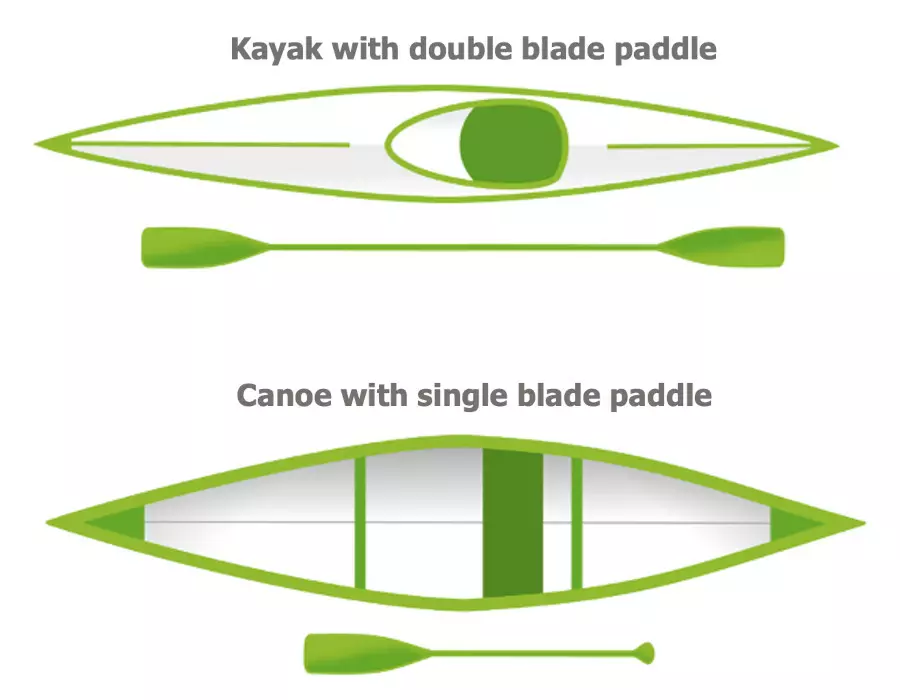
The Different Types of Kayaking
There are dozens of different forms of kayaking, from competitive sports to leisure and recreation. Here are some of the most popular:
Freestyle Kayaking
Freestyle involves tiny little kayaks, referred to as ‘squirt boats’. They must be small in order to help the paddler perform tricks in them, such as rolls, cartwheels and flips. The tricks are then scored by judges on difficulty and how easy they made it look.
Slalom Kayaking
Similar to slalom skiing, slalom kayaking involves a timed race from top to bottom, whilst ensuring you pass through all of the marked gates on the course.
Kayak Racing
This discipline is a popular Olympic event, with singles and doubles races over various lengths. There are also more extreme, multi-day versions of kayak racing that can cover hundreds of miles.
White Water Kayaking
White water paddling involves navigating flowing rivers and powerful rapids. The pursuit of waterfall drops, standing waves and high-intensity paddling. White water kayaking can be dangerous when not treated with the utmost respect and safety cautious eye.
Kayak Fishing
A more relaxing form of kayaking compared to some of the other disciplines on the list. You can now purchase kayak fishing-specific boats that include rod (and beer) holders.
Sea Kayaking
Of course, you could take any kayak on the sea. But sea kayaks are specifically designed for ocean paddling. They are longer and more narrow, which helps them cut through waves and increases their straight-line speed.
They also come equipped with hatches within the boat, that allow you to store extra gear such as a tent, sleeping bag and kitchen equipment, making it the craft of choice for expeditions.

What Makes a Sea Kayak a Sea Kayak?
A sea kayak is a specialised type of kayak designed for long-distance, open-water navigation. They are typically longer and more narrow than most recreation and white water-style boats. This shape allows them to cut through waves and cover great distances at a fast pace.
As we already discussed, early kayaks were made of wood, whalebone and animal hides. Nowadays sea kayaks are made of lightweight materials such as fibreglass, carbon fibre and plastics.
The lightweight is essential because the boats are often packed with camping gear, extra food, warm clothes and other such things for multiday touring. All of this equipment fits into the storage hatches that can be found in the bow and stern.
Sea kayakers find many uses for their boats due to their excellent ability to handle various sea conditions. From rock hopping, surfing and large expeditions from A-B; to coastal exploration, wildlife watching, camping and adventuring in marine environments.
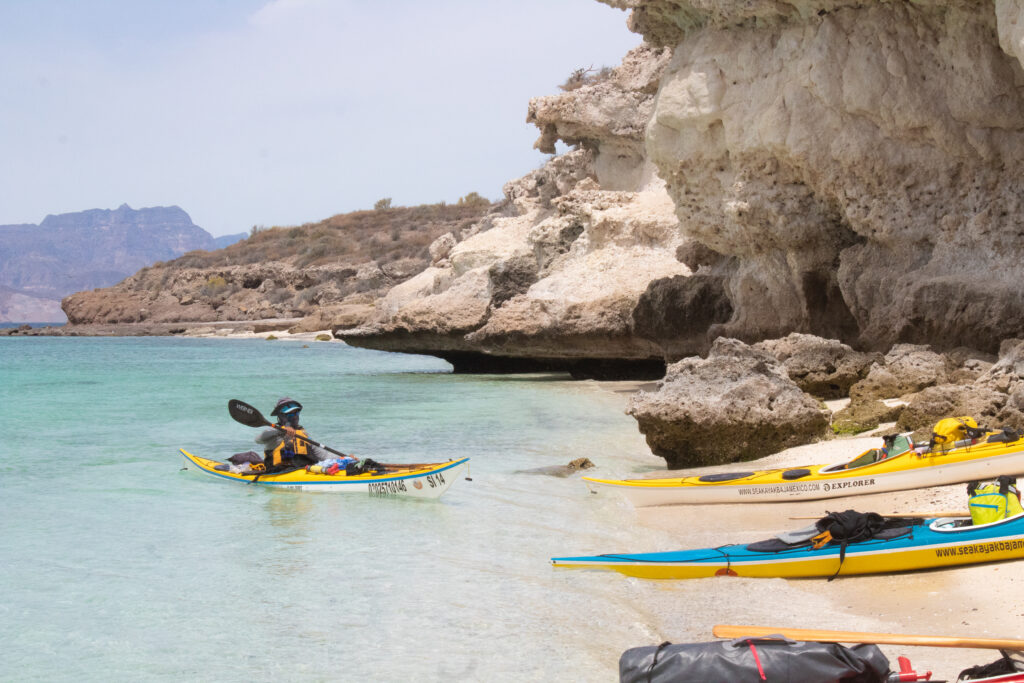
What is the Best Sea Kayak for Beginners?
Before deciding what type of sea kayak to buy, there are a few factors you need to consider.
- Are you paddling for leisure, competitive racing, going on sea kayak expeditions or fishing?
- Where will you be paddling? Sheltered or open waters exposed to the elements?
- Where will you launch and land? Flat water or in open surf? On soft sand or near rocks and rough gravel?
- Will you be kayaking alone or mostly with others? Are you physically able to move the boat on and off your car or access point?
Once you know the answers to these questions, your next challenge is finding the type of sea kayak that is right for you. Fortunately, there are tons of sea kayak manufacturers around the world, producing excellent craft suitable for all conditions.
Different Types of Sea Kayaks
Most kayaks today are made of:
- Polyethylene plastic. These sea kayaks are more durable, impact-resistant, perfectly suited for rocky terrains and the least costly option. However, they are heavier, requiring more effort to paddle and are prone to warping with age or if strapped too tight on a car roof in direct sunlight.
- Fibreglass resins. These boats are much lighter, making them easier to carry to and from the water, and speedier on water. They are quite strong but scratch easily amongst rocks and gravel – although repairs are fairly straight forward. They are more expensive than plastic kayaks. Fibreglass kayaks have the option of adding a carbon Kevlar coat, which is the same stuff body armour is made from. That makes them much much more durable but of course is expensive.
- Inflatable sea kayaks. Lightweight and inexpensive, they are easy to store and carry, but are prone to punctures, UV damage and have shorter life spans. They are extremely affected by the wind.
How Can I Learn to Sea Kayak?
There are a number of ways you can learn to sea kayak. If you live in a sheltered area with calm bays, no currents, with great weather and you’re comfortable in the water – as well as agile enough to get in and out of the boat yourself – then you could give it a crack and maybe figure it out. I would 100% not recommend this. The sea is to be respected and there are often hazards that you may be completely unaware of.
The Dunning–Kruger effect is a cognitive bias whereby people with low ability, expertise, or experience regarding a type of task or area of knowledge tend to overestimate their ability or knowledge.
The best way to learn to kayak is with friends. Reach out to anyone else you know with a boat and arrange a meet-up! I’m confident that they would be more than happy to take you under their wing and share tricks and tips.
If that’s impossible, try finding a local paddling club in your area or somewhere nearby. There are many kayak groups on Facebook that are full of keen paddlers looking for any excuse to get out.
Kayak clubs often have qualified members and people training towards various certifications. It’s beneficial to them to have a guinea pig such as yourself to practise their teaching skills.
Best of all – if you really want to learn to kayak properly, I’d recommend finding a local kayak outfitter in your area and booking a half or full-day tour with them. You’ll have plenty of opportunities to ask your guide all of your safety-related questions. They’ll also know about any specific hazards in your area.
After a few lessons over a month or so, you’ll be filled with knowledge and confidence to safely navigate your local waterways. Not only that, but you’ll learn of some of the most scenic spots to check out!
You can either take it a step further by finding a beginner-friendly, multiday kayak tour to learn new skills in the most incredible locations. Such as the Belize Kayak Expedition or the Baja Sea Kayak Expedition.
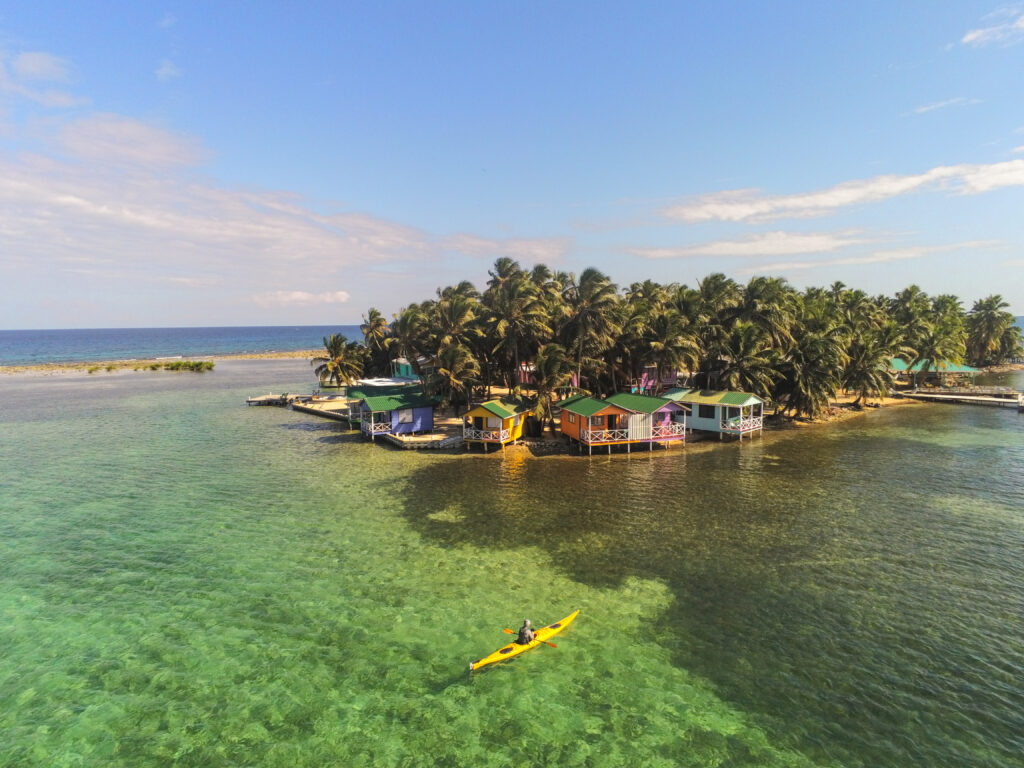
What Essential Equipment is Needed For Sea Kayaking?
As with hiking, kayakers have a certain element of personal preference and customisation when it comes to equipment. The following items however are to be considered essential:
Kayak
Obviously. Ensure it is appropriate for the conditions you use it in.
Paddle
Of correct length. Consider having a spare if kayaking solo or in rough waters.
Personal Floatation Device (PFD) / Buoyancy Aid
Know how to fit it correctly. This item has been responsible for saving many lives. And unfortunately, the lack of a PFD has been the cause of a number of unnecessary deaths of paddlers.
Spray Skirt
This is a material that seals you into the cockpit of a closed-cockpit kayak. Often made of neoprene. Make sure you know how to use it and have practised getting out of it when upside down.
Kayaking Clothes
Swimming gear in warm water or a wet suit. A dry suit may be necessary for cold water. Remember to dress for the water, not the air.
Spare Clothes
A warm set of clothes to change into in case of emergencies. Best to keep this in a dry bag in a storage hatch.
Dry Bags
The greatest invention known to man. You can never have enough dry bags. Essential for all of your items to keep them dry and also to help with organisation. I like to use difference colours so I know immediately what’s in it without opening it.
Bilge Pump & Sponge
To get water out of your boat.
Safety Equipment
Helmet, whistle, first aid kit, light, flares, compass, GPS – what you bring depends on your skill level, your group and the adventure you are going on.
Food, Snacks, Hydration
Nothing can turn a bad mood around as quickly as a hot drink and a chocolate bar! Always bring more food than you think you’d need, just in case.
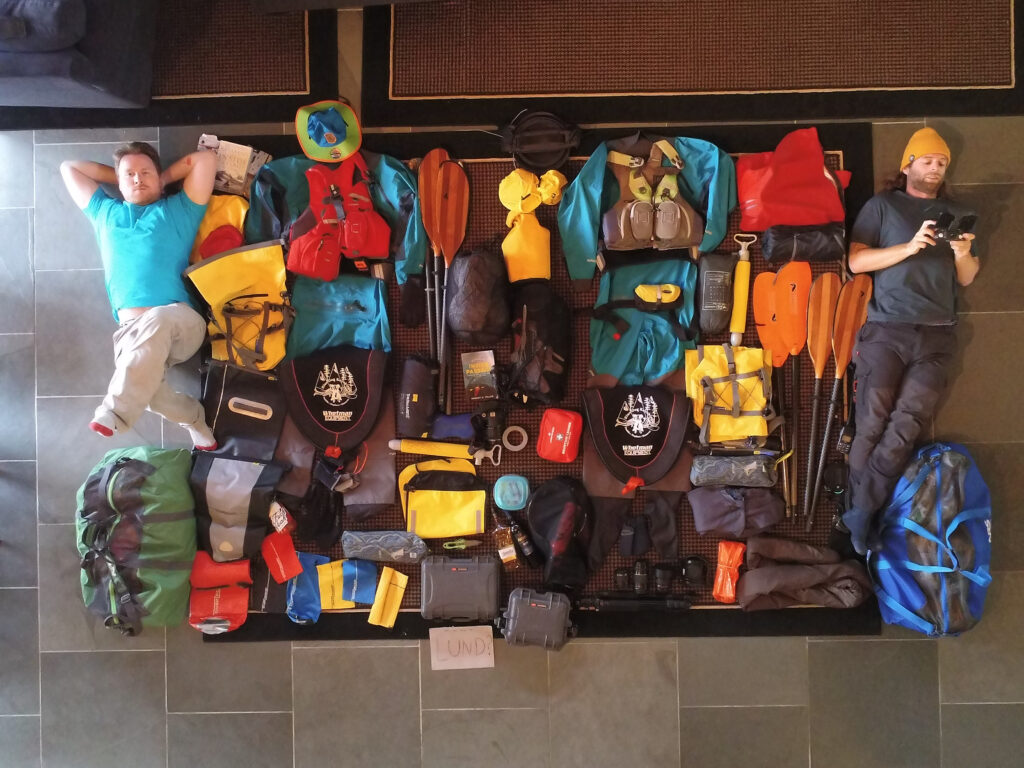
Now you’re up to speed with the basics of sea kayaking, here are 8 Ways to Stay Safe When Kayaking

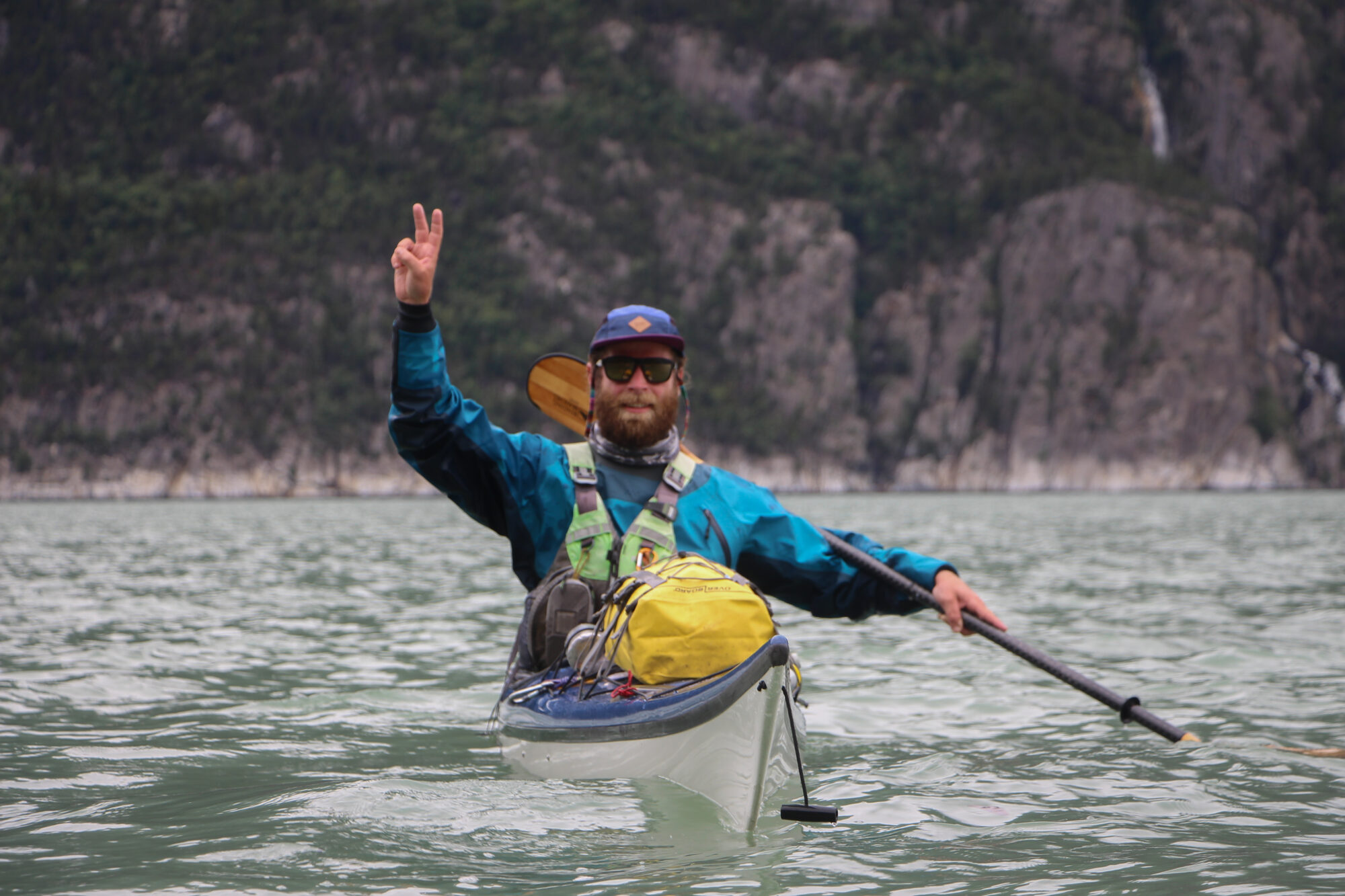
You must be logged in to post a comment.